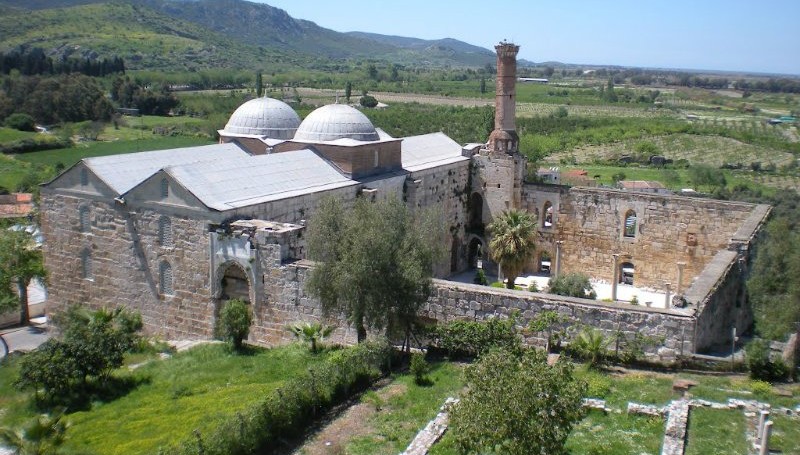Isa Bey Mosque (Ephesus - Selcuk)
Isa Bey Mosque in Selcuk, which was restored in 1934 and taken back into use as a place of worship, is adjacent to the ruins of St John’s Basilica, just below the summit of Ayasoluk Hill which is, crowned by Selcuk Castle. It was originally used both as a place of worship and as a kervanserai.
It was built in the Selcuk Anatolian style in 1375 by the architect Samli Dimisklioglu Ali of Damascus, in honour of Aydinoglu Isa Bey (Jesus) using stone taken from the ruins of nearby Ephesus and the Temple of Artemis.
As well as being one of the most beautiful of its style it is also the oldest mosque to incorporate a large courtyard. Typical of its Selcuk - Turkish architecture are its two central domes, two lateral aisles, window mouldings, mosaics and painted Iznik tiles. There are two gates to the mosque; one to the east, the other to the west which passes through a marble-covered wall decorated with calligraphic inscriptions and geometric patterns cut into the stonework.
The courtyard, which contains some very old gravestones with Arabic script, has a central fountain for ritual washing prior to worship and is surrounded by 12 porticoed columns. The interior of the mosque has a speaker’s pulpit facing the congregation and a mihrab or niche indicating the direction of Mecca which all must face for prayer.
Isa Bey Mosque originally had two minarets; the one still standing is built of brick on an octagonal base. Its upper part, above the balcony, was damaged by an earthquake in the 16th Century. Nothing remains of the eastern minaret which had been destroyed earlier. Today in spring storks can be seen nesting on the minaret, oblivious to the calls to prayer emanating from the loudspeakers.
Adjacent to the mosque is a Selcuk period octagonal stone and brick-built tomb with a pyramid-shaped roof.

